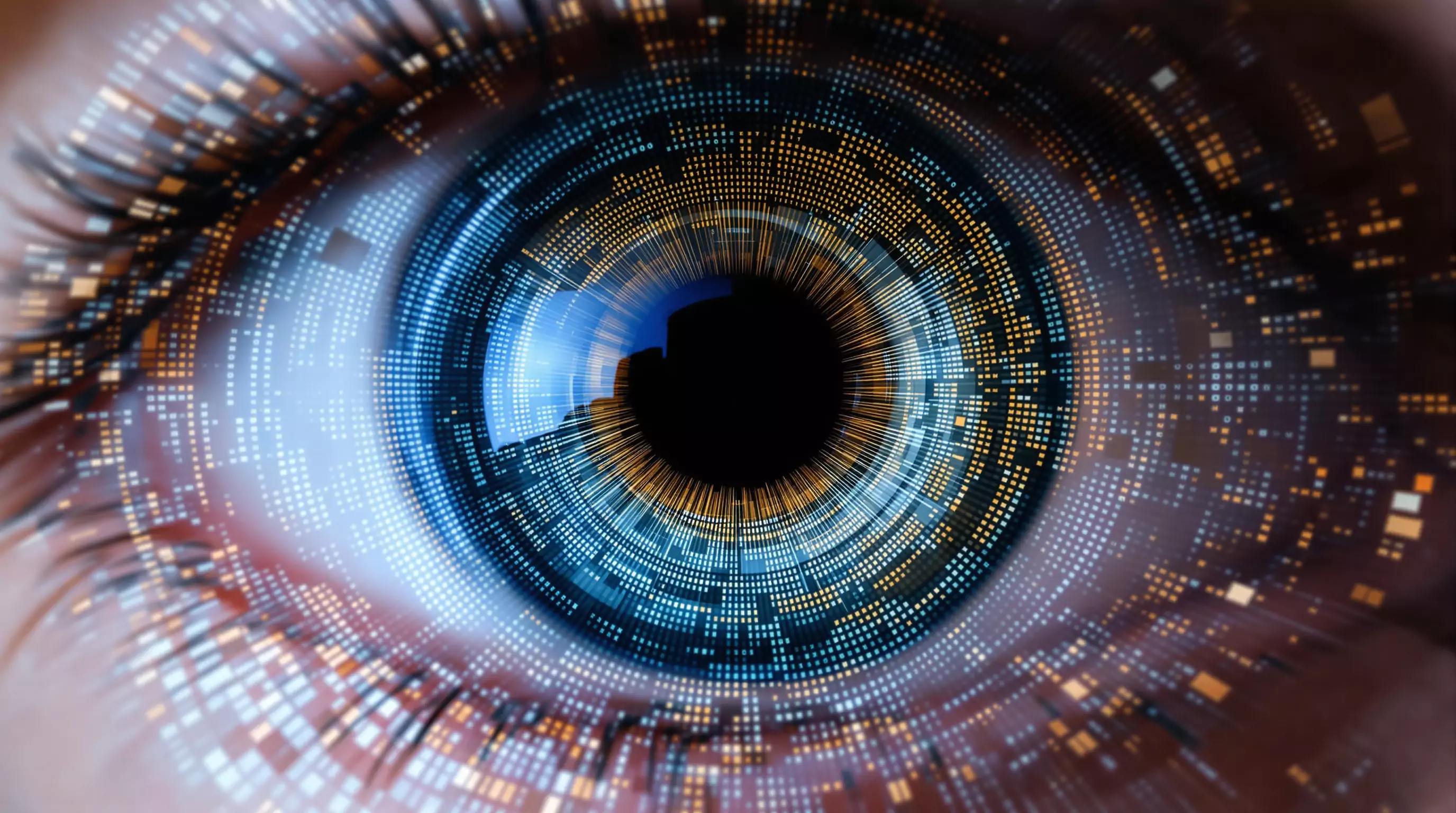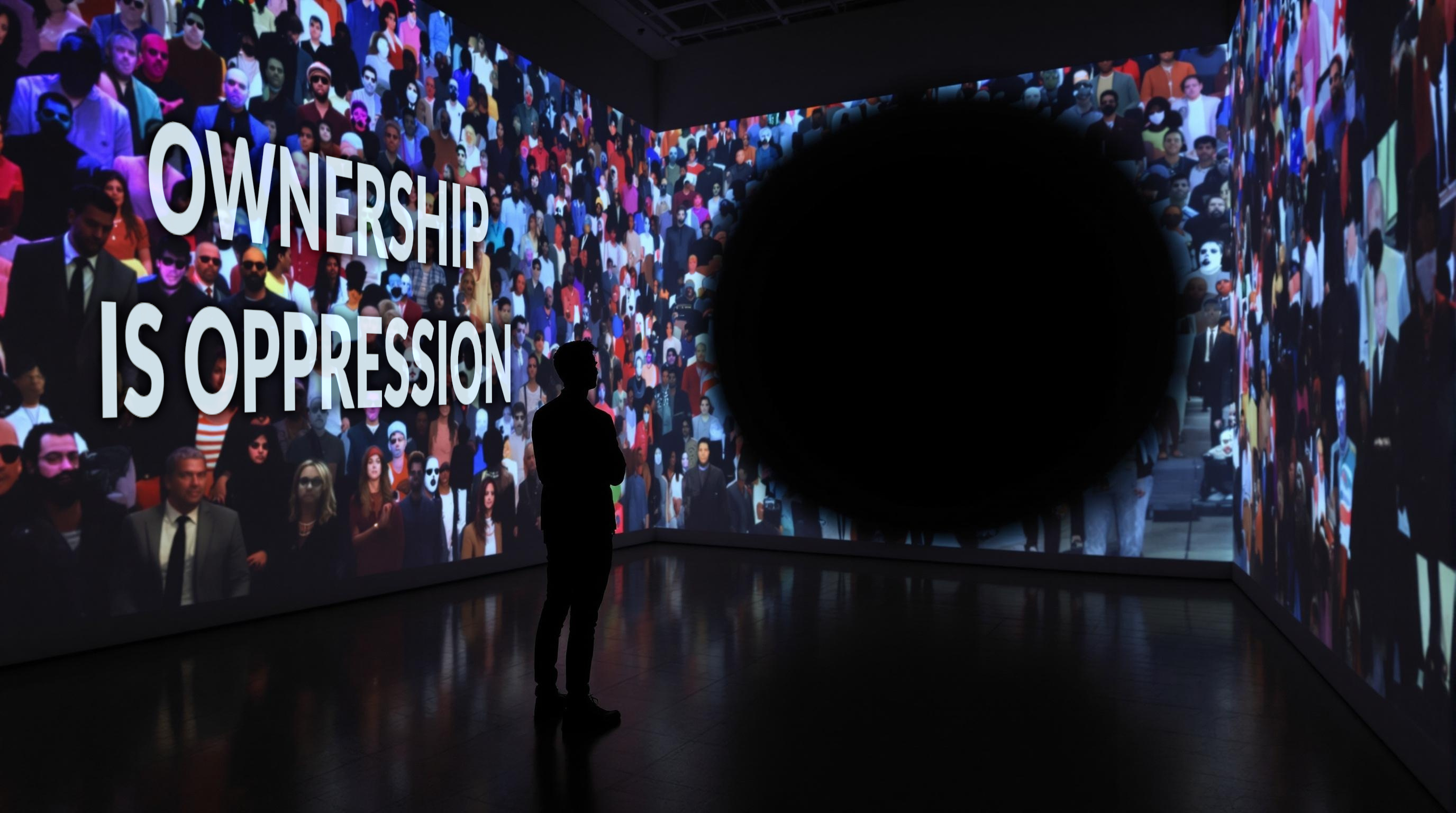
Overview
Ryan Kelln & Benjamin Lappalainen
Blind Spots, 2025
Interactive video projection
Artist Statement
Using computer vision and other AI technologies, the piece disappears when you look at it. The projection you can not see is an amalgam of recordings of previous audience members interacting with the piece. In this era of rapidly advancing technology, the systems we construct surround us completely, invisibly pervasive, but becoming visible in their absence.
We blend recordings of the audience with references from fiction and art reflecting our feelings of being haunted by external forces—economic, ecological, and cultural—simultaneously omnipresent and elusive. However, we are all complicit; just as our movements and actions are recorded and remixed into the piece, we are all inescapable participants in these systems. Drawing on Derrida's concept of "hauntology," the ghosts of our past and imagined future linger at the edge of perception and shape reality without ever being fully grasped.
We feel an urgency due to the rapid rise of AI, which increasingly shapes society in both visible and hidden ways. The gaze-tracking at the heart of this work, something learned early in human childhood, is now possible by machines using consumer hardware, offering a glimpse into how machine intelligence is beginning to mimic embodied cognition and its potential to transform human-machine interactions. While surveillance, social media and other machine mediated systems are already pervasive, there is a tidal wave approaching of things that "think" that we'll be entangled with inside increasingly complex and rapidly changing systems. By looking in our blind spots we hope to find a future we can coexist in together.
Project Description
Blind Spots is an interactive installation that uses computer vision and artificial intelligence (AI) technologies to explore the unseen systems shaping our society. The installation invites audiences into an experience of paradox: the projected visuals disappear whenever directly observed. By integrating gaze-tracking software, the projection adjusts dynamically to the viewer's focal point, ensuring the video content remains visible only in their peripheral vision. Similarly, spatial audio always seems to emanate from behind the audience. This experience deliberately frustrates the ability to investigate and "know," offering a visceral metaphor for the difficulty of perceiving the systemic forces — surveillance, institutional controls, and media influences — that govern our lives, often unnoticed.

The projected content, visible only outside these "blind spots," blends past audience interactions with the piece, layered with fragments of speculative fiction, contemporary art, and philosophical ideas. This amalgamation creates a haunting narrative that reflects on systemic forces — economic, ecological, and cultural — simultaneously omnipresent and elusive. Audiences become complicit in the work; their movements and actions are recorded and remixed into the projections, underscoring their inescapable participation in these systems. Drawing on Derrida's concept of "hauntology," the installation evokes the ghostly presence of such forces, lingering at the edges of perception and shaping reality without ever being fully grasped.
Speculative fiction from authors like Le Guin, Gibson, and Butler, alongside visual references to science fiction films and contemporary art, provides a narrative framework. These elements contextualize the themes of systemic collapse, AI's emergence, and humanity's enduring desire for better systems — along with their inevitable corruption. Inspired by Jenny Holzer's "truisms," these texts blend past, present, and future imaginaries, exploring how we are shaped by the stories we inherit and the futures we envision.
Video Documentation
Video recording from our exhibition at UKAI Open Studio: Horror and Metaphors in AI in January 2025.
This documentation shows our first prototype of Blind Spots in action, demonstrating how the projected visuals respond to audience gaze and movement.
The Artists
Blind Spots is a collaboration between the members of ArtRemains, a collective of artists dedicated to exploring the intersections of AI, art, and cultural systems.
Ryan Kelln
Ryan Kelln (he/him) is a software artist based in Toronto, with over twenty years of experience spanning game and web development, interactive installations, and machine learning. A passionate advocate for open source and the Creative Commons, Kelln crafts art that celebrates themes of sharing, community, and creativity. His work is realized through ongoing projects that have evolved over 15 years, live performances with musicians and dancers, and installations featuring custom software and AI. Kelln critically addresses technology while envisioning and advocating for inclusive, emancipatory systems. Beyond his artistic contributions, curation of generative art, and advocacy for art-making, his expertise in machine learning enables him to mentor emerging artists and educate the public through lectures and workshops.
Benjamin Lappalainen
Benjamin Lappalainen (he/him) is a Toronto-based emerging multidisciplinary artist and creative technologist, producing audio-reactive visuals for performances, perceptive interactive installations, and algorithmic drawings created using a pen plotter. Much of his artistic process is centered around architecting and programming generative and perceptive systems to create and interpret visuals and sound. His work has been showcased at group and solo exhibitions as well as live performances at InterAccess Gallery, Northern Contemporary Gallery, Long Winter Music & Arts Festival, UKAI Projects, and on the p5.js website. The current focus of his artistic research is on the sustainable usage and repurposing of new and old technologies to enable novel modes of interaction between artwork and viewer, and artwork and environment.
Both artists are committed to open-source principles, ensuring that their tools and processes are accessible to other artists. This commitment aligns with the project's ethos of inclusivity and collective empowerment, amplifying its impact beyond the immediate audience.
Exhibition History
UKAI Open Studio: Horror and Metaphors in AI
Toronto, ON — January 17, 2025
First prototype of Blind Spots showcasing the core concept using a single webcam and projector.
Future iterations envision expanding the installation into a 360-degree experience with multiple cameras and projectors and spatial audio, creating a fully immersive environment that mimics how we are embedded in systems.
In a time of rapid change, Blind Spots invites audiences to confront the forces shaping their lives, asking critical questions about what remains hidden and why. By making these systems visible — if only in their absence — the installation fosters reflection and opens new possibilities for understanding and agency.
Inquire about exhibition